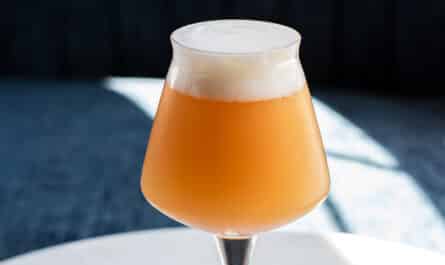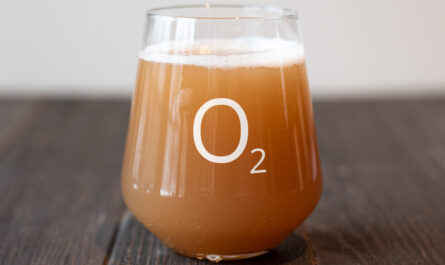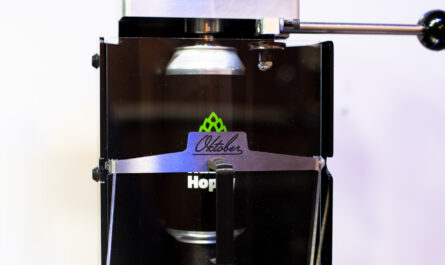I’ve compiled a living list of quick-hit questions and answers I’m either frequently asked or I’ve come across in various brewing forums. Many of these items are questions I searched for when I was first starting out. I’m hoping this helps displace myths and offers some guidance for beginners.
If there’s something you think should be added to this list, I’d love to hear from you in the comments.
I’m brand new to homebrewing. Where do I start?
Start small and get a feel for the hobby before investing a lot of money. You can start with small 2-gallon batches on the stovetop and a really simple homebrewing starter kit. One of the best books to read is How To Brew by John Palmer. This is considered the homebrewing bible. The r/homebrewing subreddit and homebrewtalk.com are fantastic communities to explore. I especially love Reddit.
Another favorite resource of mine is brulosophy.com, which is perfect for intermediate and advanced brewers looking to experiment. You can also read my getting started post for a quick primer.
As you scale up in batch size, you’ll need a more powerful heating source to boil larger volumes of wort. This is where larger kettles and burners can increase starting costs.
Is homebrewing illegal?
No! Thanks to President Jimmy Carter, homebrewing is now legal in 50 US states.
Can I legally sell my homebrew?
In short, no. Selling homebrew requires a commercial license and various legal hoops to jump through. Technically speaking, homebrewing is legal for personal consumption only.
Is homebrewing expensive?
It doesn’t have to be. Homebrewers can get started homebrewing with minimal investment. A typical starter setup ranges from $50-$100 depending on batch size and packaging. I would recommend starting with extract brewing and bottling and building up from there. Once you get into kegging homebrew, costs start to build up.
Can I save money brewing my own beer?
Honestly…probably not. Brewing equipment and ingredients are expensive….especially when purchased in small quantities. Some brewers MAY be able to get great value out of their brewing endeavors, but most spend far more on equipment to truly justify any real cost savings. This hobby is about the joy of crafting your very own beer.
Is homebrew as good as commercial beer?
It’s surprisingly easy to make exceptional beer right at home. Assuming you have the right equipment and process, you can
make beer that competes with the top commercial breweries. Learn more on here on making better homebrew.
What are the primary ingredients in beer?
Beer is made with water, grains, hops, and yeast.
What’s the difference between extract and all-grain brewing?
In all-grain brewing, the brewer uses crushed malted grains and mashes with very hot water to convert starches into fermentable sugars (wort). In extract brewing, this process has already been done for the brewer and is added to hot water in syrup or powdered form. Both methods are the same from the boil stage onward. The best comparison is making a cake from scratch versus from a box mix. Get a more in-depth overview here.
How long does it take to brew beer?
This question is largely dependent on beer style, method, and process. A typical brew day can last anywhere from 3-6 hours depending on equipment and process. Fermentation, carbonation, and conditioning typically take 2-3 weeks. My typical turnaround time from yeast pitch to pour is about 3 weeks. If you’re bottle conditioning, it’s likely closer to 4 weeks.
How long does beer take to ferment?
Most ales fermented under optimal conditions ferment in 3-5 days. Secondary fermentation or the yeast cleanup phase can last another 2-3 days. This is when yeast byproducts are cleaned up for better-tasting beer. As a rule of thumb, most batches need 10-14 days to fully mature.
Do I need a secondary fermenter?
Absolutely not. I never use a secondary fermenter and always keep transfers to a minimum. There is no risk in keeping your beer on the yeast cake/trub for a few weeks. Admittedly, it’s easier to bottle from a dedicated bottling bucket but it’s not always necessary. Here’s why I ditched the secondary fermenter.
Do I need to cold crash my beer?
Cold crashing beer is a great way to settle yeast, hops, and sediment stuck in suspension. It’s a vital part of beer clarification and also makes transfers easier. It also ensures less trub ends up in your kegs or bottles. I always cold crash my beers. Learn more on cold crashing and why it’s so important here.
Do I have to rehydrate dry yeast?
No. Dry yeast is very easy to work with and can be pitched directly into the fermenter. Most dry yeast does not require wort oxygenation prior to pitching.
What’s the difference between cleaning and sanitization?
Cleaning removes build-up and residue and sanitization kills unwanted bacteria and wild yeast. Both cleaning and sanitization are critical for success. I clean both hot and cold side equipment with powdered brewery wash and then sanitize (Star-San) anything that comes in contact with my beer after the boil (cold side). All equipment should be cleaned but not all equipment requires sanitization.
When in doubt, over-clean and over-sanitize your equipment. Clean equipment means cleaner tasting beer and less risk of infection. Never use dish soap on brewing equipment.
Why is my beer not fermenting/is my fermentation stuck?
Stuck fermentations are very rare. Assuming you pitched enough healthy yeast into fermentable wort, your beer is likely fine. Some fermentations may take 24-72 hours to show signs of active fermentation. This is known as the yeast lag phase. In all my years of homebrewing, I’ve never had a stalled or stuck fermentation. Always ensure you’re fermenting at recommended strain temperatures. In my experience, most beers take 12-24 hours to show signs of fermentation.
1. Ensure your wort is not too cold. 2. Ensure the yeast you pitched is fresh and viable. This is usually labeled on the package. When in doubt overpitch or make a yeast starter. 3. Repitch more yeast if all else fails.
My airlock is not bubbling.
I’ve had beers fully ferment without showing any airlock activity. The biggest culprit here is a leaky fermenter. Yeast produces CO2 during fermentation, sometimes this CO2 can escape through a fermenter lid or gromet, bypassing the airlock.
How do I check specific gravity?
Specific gravity is the process of measuring sugars in wort. Using both original gravity (OG) and final gravity (FG), you can calculate alcohol by volume (ABV) in your homebrew. To do so, you need to invest in a hydrometer. You can also use a refractometer, but this device will only work for measuring specific gravity prior to fermentation.
A hydrometer is used to measure sugar in wort BEFORE fermentation (OG) and then again AFTER fermentation has completed (FG). The yeast consumes fermentable sugars in the wort, converting it to alcohol, leaving less sugar behind.
Can I use a refractometer for calculating final gravity?
As a best practice, a refractometer should only be used for calculating specific gravity prior to fermentation. This tool is great for taking various data points throughout the hot side process. The presence of alcohol will distort a refractometer’s readings, rendering it inaccurate. There are refractometer alcohol correction calculators out there, but I would not rely on them for accuracy.
Is my beer finished fermenting?
When in doubt, give it 10 days to fully ferment. It’s best to have a sense of where your beer SHOULD finish in terms of specific gravity (check your recipe kit). This will help you easily determine if your beer is done. If you’re unsure, take 3 gravity readings 3 days apart with your hydrometer. If your gravity readings remain unchanged, your beer is likely done. I would not start this process until days 6-7.
Where should I store yeast?
Dry yeast can be stored in a cool dry environment, unrefrigerated, for up to a year. Liquid yeast should remain refrigerated and is best used within a few months of purchasing. Always check the printed yeast viability date. Liquid versus dry yeast.
How should I store hops?
Hops should be kept in the freezer in airtight containers that are ideally vacuumed sealed and away from any light. Learn more on hop storage here.
Do I need a conical fermenter to make good beer?
No, you can make great beer in a plastic bucket. A conical fermenter helps with process control and more advanced styles and processes of beer. Conical fermenters come in handy when brewing hop-forward IPAs or lagers. You can learn more about my thoughts on conicals here.
My bottles are gushing/over-carbonated.
This is likely due to too much priming sugar added during bottling. You want to ensure you add the recommended amount of corn sugar and mix well to ensure it’s evenly distributed throughout the beer. Most bottled beers require 10 days to carbonate and condition in the bottle.
Furthermore, if you bottle your beer too soon, it could result in continued fermentation inside the bottle. This would create bottle bombs. The other culprit is infection. This is harder to identify from afar but you’ll need to look at your cleaning and sanitization.
Do I need to make a yeast starter?
It depends. The purpose of a yeast starter is to increase cell count in your yeast. It’s a great way to scale up your batch of yeast and save some money rather than buying multiple packs/pouches. Use brewing software or a yeast calculator to ensure you’re pitching enough yeast. Chances are, you’re likely pitching less than you should. A healthy pitch ensures a strong healthy fermentation. For simplicity, I tend to lean towards pitching multiple pouches rather than creating yeast. starters. Yeast starter help.
What is yeast attenuation and flocculation?
To oversimplify, attenuation is a measurement of a strain’s ability to ferment wort under specific circumstances. Higher attenuating strains will convert more sugars into alcohol in the same wort than lower attenuating strains. Attenuation is reflected as a percentage, meaning the percentage of sugars in the wort that will be converted into alcohol. These numbers are usually listed as a range and are dependent on a variety of factors. You can understand the power of attenuation by reading my 5 yeast experiments.
Flocculation describes the yeast’s tendency to stay in suspension during the course of fermentation. As yeast flocculates, it clumps/binds together, becomes heavier, and falls to the bottom of the fermenter. High flocculating strains clump together more rapidly and readily, resulting in clearer, brighter beers, while lower flocculating strains result in hazier beers because they stay in suspension longer, even after fermentation has concluded. Lower flocculating strains will convert more sugars into alcohol than higher flocculating strains.
Is liquid yeast superior to dry yeast?
No! Dry and liquid yeast can both yield exceptional results. The only reason I will use liquid over dry is for yeast availability. It used to be true that there were far more liquid strains available to homebrewers, but that has changed greatly over the past 10 years. Liquid versus dry yeast.
Do I need to aerate wort?
It depends on whether you’re using liquid or dry yeast. Yeast needs oxygen to do its job well. Oxygenating wort via agitation or with pure oxygen is the two most popular means of aeration. Dry yeast is believed to not benefit from aerating since the necessary nutrients are prepackaged with the yeast. As a rule of thumb, always aerate when using liquid yeast and check with the manufacturer when it comes to using dry yeast. More info on wort aeration can be found here.
Why does my beer taste yeasty or estery?
There are several common off-flavors that can ruin a batch of beer. The most common problem with homebrewed beer is failing to control fermentation temperature. If your beer ferments too hot, it’s going to introduce several unfixable off-flavors into the final product. Yeast produces more esters at hotter temps. Underpitching is another major culprit. Improve your homebrew.
Is electric brewing more expensive than propane or gas brewing?
Electric brewing is not as expensive as you may think, however, it’s a little more complicated than placing a kettle on a turkey burner. Depending on your setup, you may need an electrician to hook up a 220v outlet/breaker, which can be costly. A lot of electric brewers end up brewing indoors, which comes with other cost considerations to account for steam mitigation. Induction brewing is a more budget-friendly approach to electric brewing. Electric brewing will likely come with more upfront costs however you’ll save on propane costs over time. More details on why I love electric brewing here.





> Why does my beer taste yeasty or estery?
THIS. Its been one I struggled with until recently finding the advice of really finding a good way to not let your fermentation get too warm AND finding a way to pitch a good amount of healthy yeast (more challenging with liquid yeast). Glad it’s on the list!
> My bottles are gushing/over-carbonated
I also find if we don’t store packaged beer at a cool enough temperature, secondary fermentation can happen and may also be a culprit, despite cold crashing and ensuring primary fermentation finished up.
In my case, I once had added an earl-grey tea tincture (decaf tea bags soaked in vodka) to an ESB directly into the keg and packaged it, but left the cans at room temp and ended up with gushing/over-carbed cans